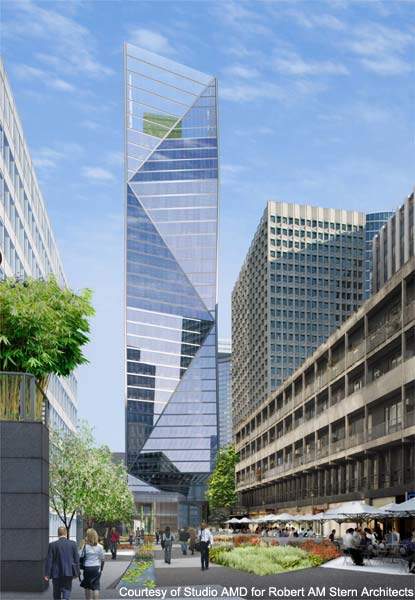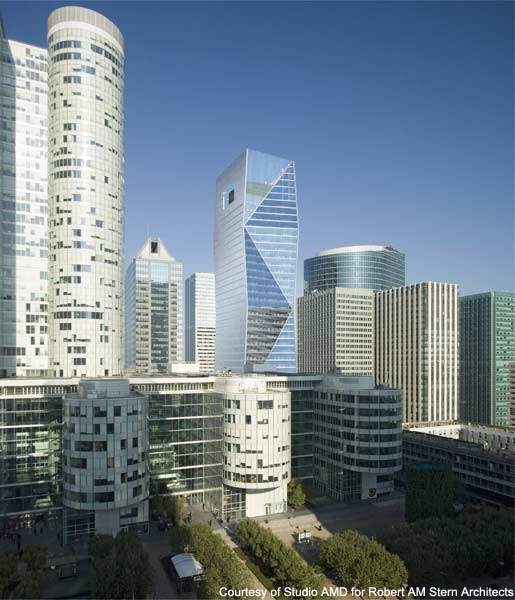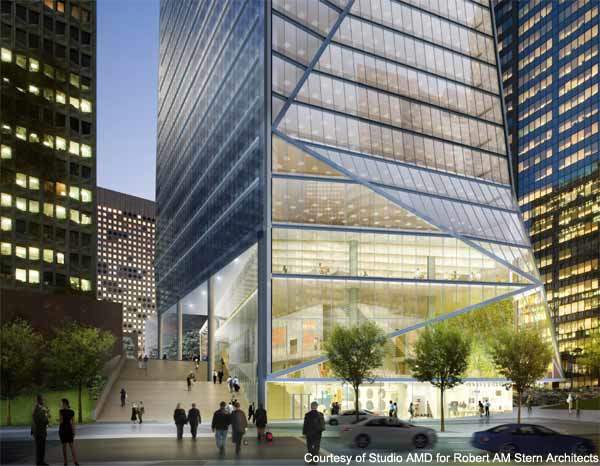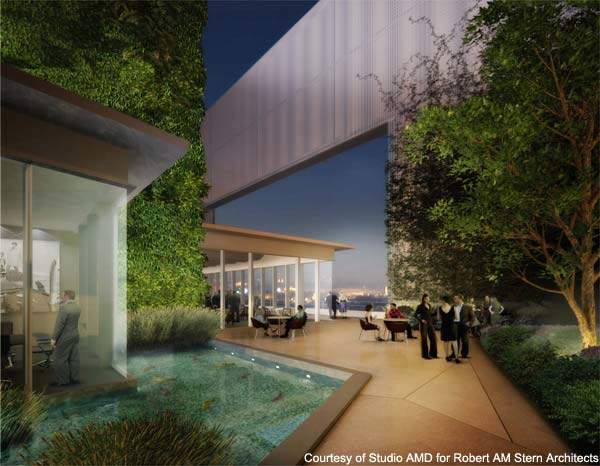Tour Carpe Diem is an environmentally responsible and visually daring office tower in La Défense, the business district of Paris. The €340m tower is the headquarters for the world’s fifth largest insurance group, Aviva, which specialises in life insurance and pensions. New York-based architects Robert AM Stern won the competition for the design in January 2008, which called for a building that ‘seized the day’ in both its look and functioning.
Other competing architects included Jacques Ferrier Architecte from Paris and Foster + Partners from London. The judging panel for the competition included Aviva France chairman Bruno Rostain, the company’s real-estate director Joëlle Chauvin and representatives from Hines France and the La Défense Management and Development Office (EPAD).
The building programme was part of the overall development plan issued by the EPAD, which breathe new life into the area’s architecture and atmosphere. Other architects with buildings standing, under construction or in the pipeline at La Défense included Jean-Paul Viguier, Arte Charpentier, Christian de Portzamparc, Pei Cobb Freed & Partners, Kohn Pedersen Fox (KPF), Arquitectonica, Morphosis, and Valode & Pistre Architectes.
CARPE DIEM SPECIFICATIONS
In the brief given by Aviva, architects were asked to design a building that embodied the aspirations – both aesthetic and environmental – of the name ‘Carpe Diem’. Project architect Robert AM Stern visualised an adventurous 35-floor, 166m-high skyscraper, poised with the confidence of an exclamation mark among the other buildings.
Its faceted façade not only makes for an eye-catching talking point but also provides environmental benefits to the building. As the connecting point between the raised esplanade – the dalle that continues the axis of the Champs-Elysées through the district – and Courbevoie to the north, the building took on a Janus-like standing in the area. Janus was the God of doors, openings and new beginnings.
Stern intended for the angular exterior to accentuate the building’s metaphoric roles as both the ‘divine’ doorway to the district and a symbol of forward-thinking architecture in Paris.
Inside, the building is home to 45,466m² of office space that stretches from the first to the 13th floor. On the level of the dalle is an 18m-high sky-lighted winter garden intended to offer respite from the weather year-round. On the 35th floor are conference and dining facilities that are wrapped by a garden framing the views of Paris.
Where the building meets the Boulevard Circulaire there is 310m² of retail space, which is linked to the lobby level by a grand stair. These lower floors and the winter garden are made of low-iron glass with structural glass mullions. A lower-ground car park provides 40 spaces, and ultimately the tower will accommodate 2,650 office workers.
SUSTAINABLE DESIGN STRATEGIES
One of the key sustainable design strategies is actually built into the architecture of the structure. On the south façade, the triple-glazed glass curtain wall made of aluminum integrates horizontal sunshade louvers that are oriented specifically to moderate southern light; and on the east and west façades the walls integrate vertical louvers to moderate low morning and evening sunlight – both reducing the need for artificial heating and cooling.
The triple-glazed walls were then finished with a silkscreen film, which increased the reflectivity of the glazing without significantly diminishing its transparency.
Also reducing the need for air conditioning are ‘smart’ horizontal vents that automatically respond to the temperature in the room, and provide natural ventilation to the space. Other sustainable design strategies include solar water heating, a heat recovery system, and high performing lighting and rainwater harvesting.
With these strategies, Tour Carpe Diem exceeded the standards set by France’s regulator of environmentally friendly structures, the Haute Qualité Environnementale (HQE). The construction began in 2011 and was completed in 2013. The building was dedicated in September 2013.











